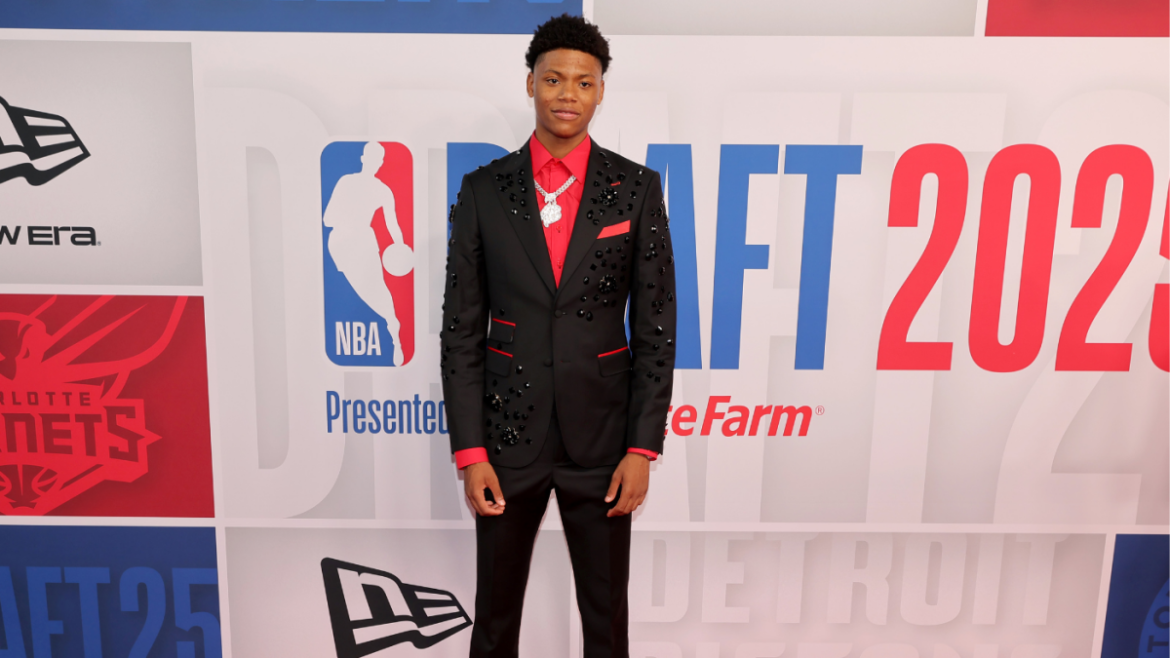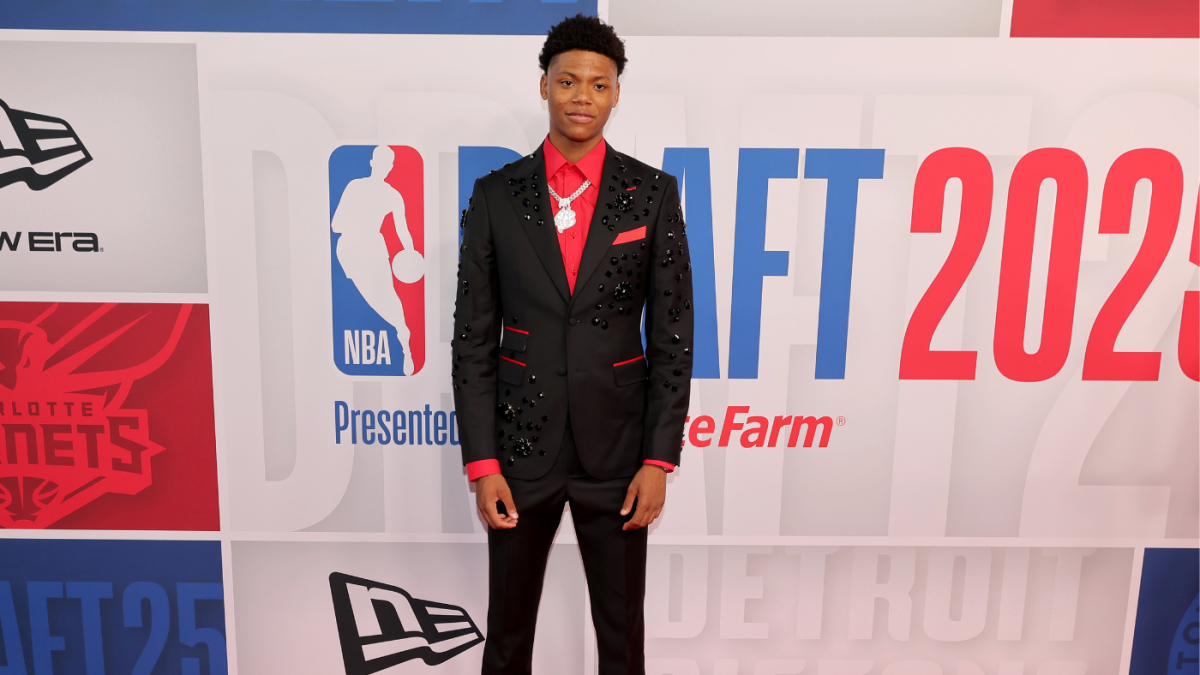Ace Bailey’s selection by the Utah Jazz with the No. 5 overall pick in the 2025 NBA Draft has become one of the most talked-about stories of the year. The draft process was anything but conventional, marked by a lack of communication, refusal to participate in workouts, and reports that Bailey’s representatives discouraged certain teams from drafting him. Despite the controversy, Bailey has since committed to reporting to Utah, signaling a willingness to move past the drama and focus on his basketball career. This saga offers a fascinating glimpse into the complexities of the modern NBA draft, the evolving role of player representation, and the delicate balance between player preferences and team control.
Unconventional Pre-Draft Path: Quiet, Cautious, and Controversial
Ace Bailey’s pre-draft journey was far from typical. Unlike most top prospects who engage in multiple workouts and interviews with potential teams, Bailey reportedly declined every workout invitation, including an official tryout with the Jazz. This decision raised eyebrows across the league, as workouts are traditionally seen as a critical opportunity for teams to assess a player’s fit and chemistry, and for players to demonstrate their interest in a franchise.
The situation grew even more contentious when reports from ESPN insiders Jonathan Givony and Tim Bontemps revealed that Bailey’s camp explicitly told at least one top-five team not to draft him under threat of not reporting. This type of pre-draft maneuver is highly unusual and controversial, suggesting that Bailey and his representatives had specific preferences or conditions for where he wished to begin his professional career. This approach diverges sharply from the traditional “draft and report” model, where players are expected to honor their draft commitments regardless of personal preferences.
Bailey himself admitted to being “caught off guard” by the Jazz’s selection, stating that he had “no idea” Utah was seriously interested in him prior to the draft. According to ESPN, the Jazz were reportedly not among his top choices, which added to the perception that the draft pick was driven more by the team’s roster needs and scouting assessments than by Bailey’s wishes. This disconnect between player and team expectations highlighted the complexities of the draft process and the potential for miscommunication between all parties involved.
Jazz Organization’s Response: Firm but Patient
Throughout the speculation surrounding Bailey’s draft status, the Utah Jazz maintained a steady and composed approach. The front office acknowledged Bailey’s talent and potential fit with the team but emphasized that the situation was under control. Key figures within the organization, including Joe Ingles and Dwyane Wade (a Jazz co-owner), publicly expressed confidence in Bailey’s commitment, suggesting that they did not anticipate a holdout or serious reluctance from the young forward.
After initially missing workouts and delaying his arrival, Bailey confirmed his plan to report to Utah shortly after the draft. This move was crucial in dispelling rumors that he might sit out the season, as the Jazz had made it clear that they would retain his draft rights if he chose to play overseas. The organization’s firm stance underscored the high stakes involved in contract negotiations and player agency, demonstrating their willingness to navigate the complexities of the situation while maintaining control over their draft pick.
Jazz media and analysts also played a role in contextualizing Bailey’s unconventional pre-draft behavior, suggesting that his representatives may have been pursuing a strategy aimed at securing a favorable landing spot while maintaining leverage in contract discussions. Despite the unusual circumstances, Utah made it clear that they would not easily trade away Bailey’s rights, signaling their long-term commitment to developing the young talent.
Bailey’s Perspective: Gratitude and Focus on Basketball
At his introductory press conference, Ace Bailey struck a tone of gratitude and enthusiasm for joining the Jazz, marking a shift from the pre-draft uncertainty to a more focused approach on his professional career. His statements, such as being “blessed to be in the position I am,” reflected a grounded and mature perspective, emphasizing basketball over the surrounding drama.
The 18-year-old acknowledged that he was surprised by the Jazz’s selection but showed no reluctance to begin his journey in Utah. Bailey’s emphasis on his readiness to contribute and develop suggested a level of maturity that belied his age, particularly given the challenging transition from collegiate to professional basketball. His agency also publicly described him as “thrilled” to join the Jazz, countering earlier media narratives that had highlighted discord or discontent. This alignment between player and representation helped stabilize the story and build fan confidence in Bailey’s commitment to the team.
Broader Implications: Player Empowerment Versus Team Control
The Ace Bailey-Jazz draft episode captures an evolving dynamic in professional sports, particularly in how players, agents, and teams navigate the draft process. Several key themes emerge from this situation:
– Player and Agent Leverage: Bailey’s camp wielded unconventional leverage pre-draft by communicating preferences and threats to not report. This highlights an increased ability of young athletes to shape their career paths, particularly in an era of enhanced agent influence, social media transparency, and public scrutiny. The draft is no longer just about talent evaluation; it is also about negotiating power and player agency.
– Team Autonomy and Risk: Utah’s decision to draft Bailey despite the risks demonstrates the franchise’s willingness to bet on talent and potentially win the player’s trust post-selection. It also underscores the tension teams face when draft boards intersect with player preferences. Teams must balance their scouting assessments with the realities of player expectations, a challenge that is becoming increasingly common in modern drafts.
– Communication Gaps: The drama surrounding Bailey’s draft partly stems from a communication gap, where Bailey was unaware of Utah’s interest, and Utah was forced to draft “blind” regarding the player’s willingness. This suggests that the pre-draft process, which includes workouts and interviews, serves an important role in managing mutual expectations. Clear communication between players, agents, and teams is essential to avoid misunderstandings and ensure a smooth transition into the NBA.
– Industry Trends: Bailey’s situation may set a precedent or cautionary tale for future drafts concerning how agents and players approach the process, the limits of draft control, and the consequences of preemptive demands. As the NBA continues to evolve, so too will the strategies employed by players and teams in navigating the complexities of the draft.
Conclusion: Turning the Page on a Rocky Start
Ace Bailey’s entry into the NBA with the Utah Jazz will be remembered as one of the more unusual draft stories of 2025. While initial hesitation and speculation raised concerns, Bailey’s commitment to report and focus on basketball offers a hopeful narrative moving forward. For the Jazz, successfully integrating Bailey will require patience, strong communication, and nurturing his talent within a supportive team environment.
This case underscores how modern professional sports drafts are more than mere selections—they are complex negotiations reflecting player ambitions, agent strategies, and organizational plans. Navigating these waters calls for flexibility and understanding from both players and teams. As Bailey begins his rookie season, the emphasis will shift from off-court drama to on-court performance, allowing the young star to shape his legacy and validate the Jazz’s faith in his upside. Both the player and franchise stand to benefit if they can transform early uncertainties into a productive partnership, making this an intriguing story to watch unfold in the seasons ahead.





